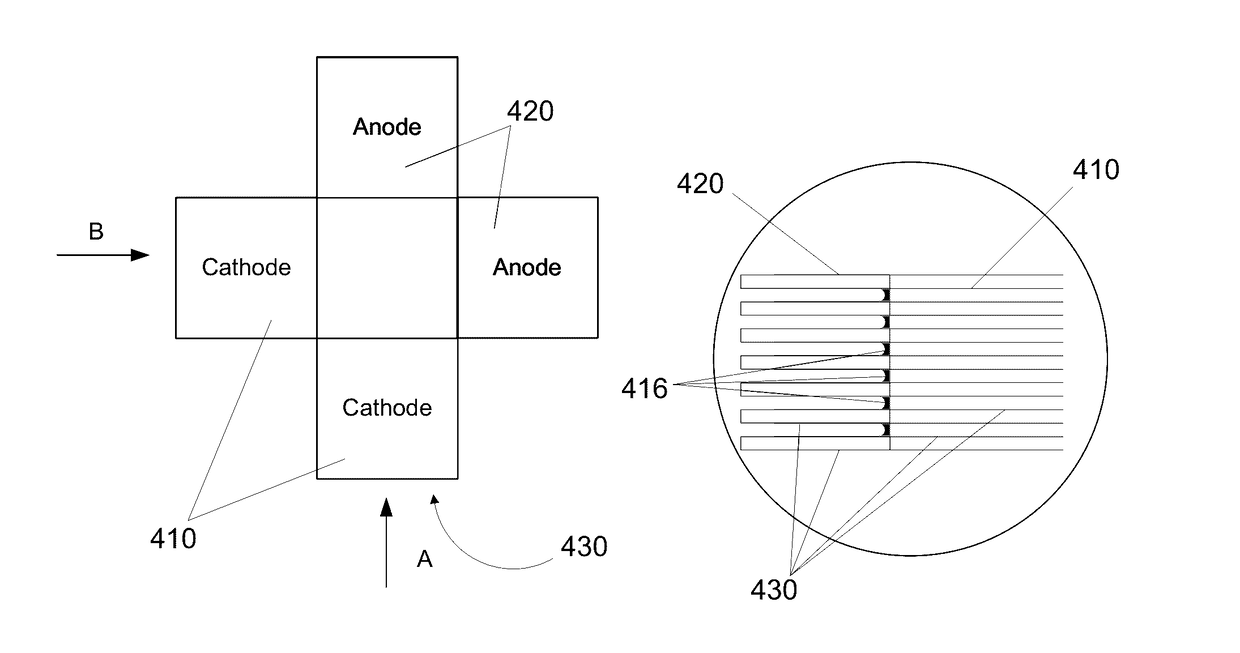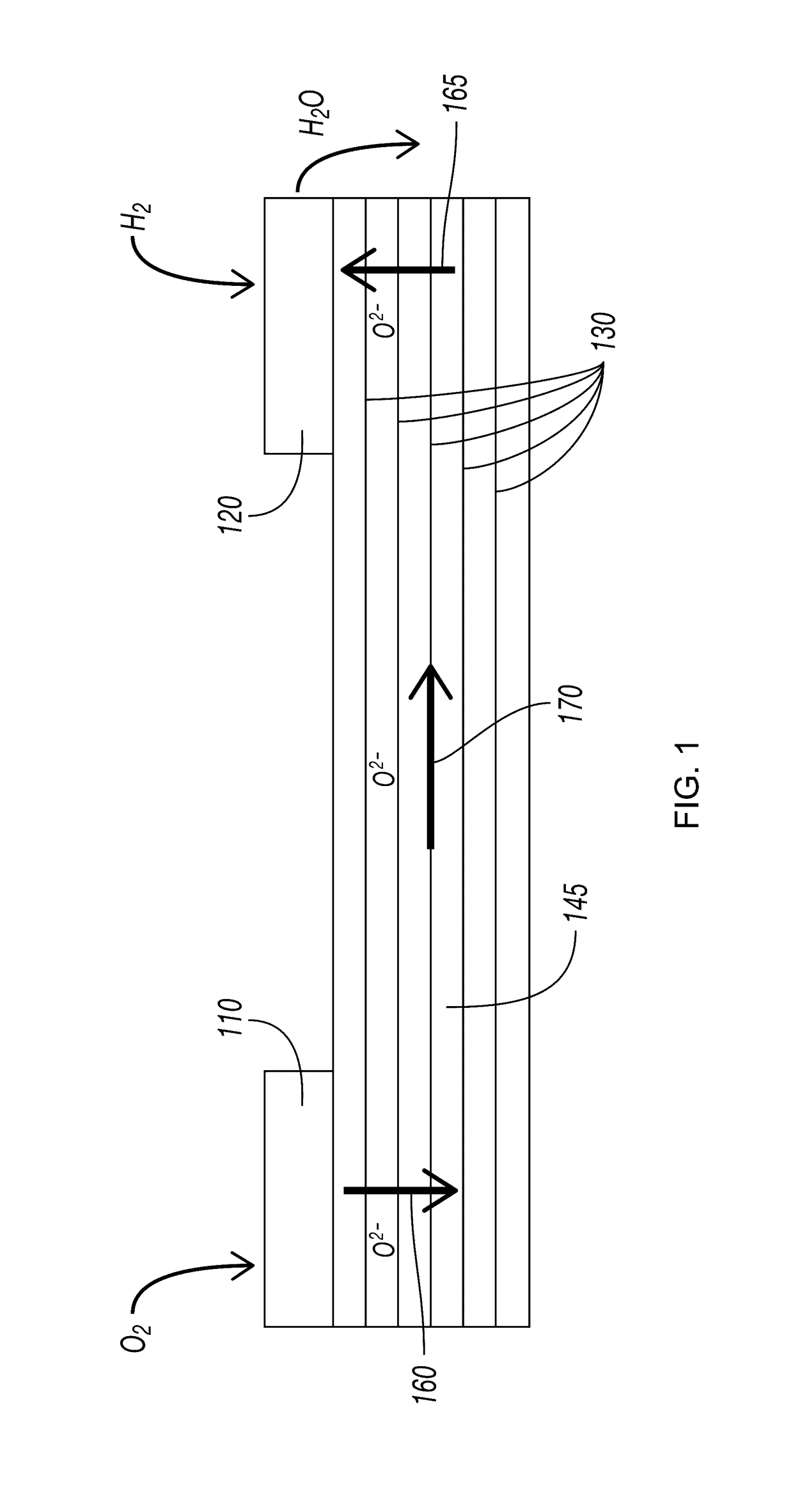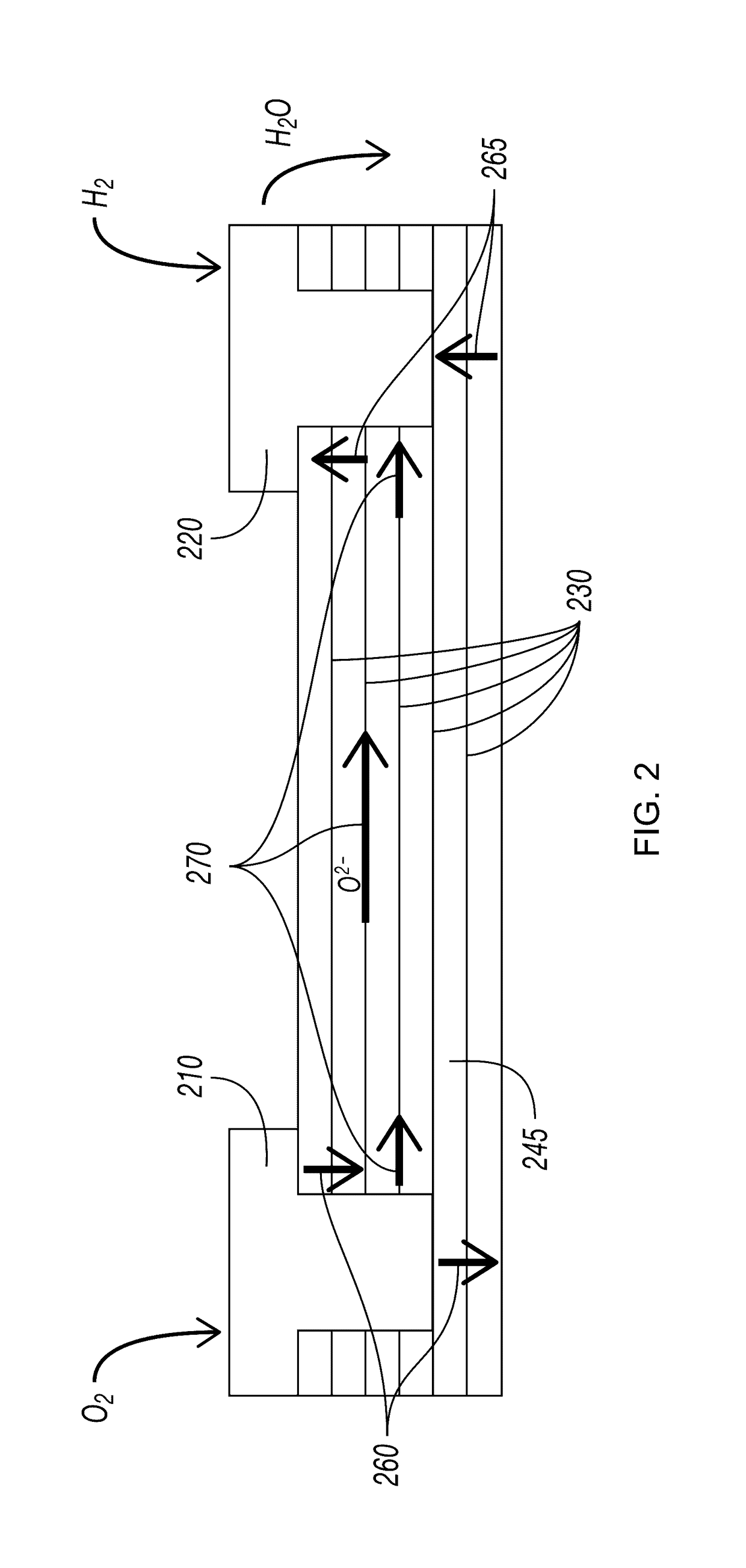Layered Electrolytes and Modules for Solid Oxide Cells
- Summary
- Abstract
- Description
- Claims
- Application Information
AI Technical Summary
Benefits of technology
Problems solved by technology
Method used
Image
Examples
example 1
, One Interface Solid Oxide Electrolyte
[0220]On a standard glass microscope slide (Ted Pella, Inc.) having dimensions of 50×75 mm, baked in air for about 1 hour at 400° C. and cut to 18×18 mm, and having a thickness of 0.96 to 1.06 mm, a composition containing strontium carboxylates and titanium carboxylates having a metal concentration of about 19 g / kg was spin-coated at 300 rpm for 5 seconds, 600 rpm for 5 seconds, 1500 rpm for 5 seconds, 2000 rpm for 5 seconds, 6000 rpm for 5 seconds, and 8000 rpm for 20 seconds. Then the sample was heated to 420 to 450° C. in air and allowed to cool, thereby forming a single coating layer of strontium titanate (“STO”) on the glass. Then, a composition containing yttrium carboxylates and zirconium carboxylates having a metal concentration of about 3 g / kg was spin-coated on the STO, heated to 420 to 450° C. in air and allowed to cool, thereby forming a single coating layer of yttria-stabilized zirconia (“YSZ”) on the STO. For convenience, “coating...
example 2
ings, Two Layers, One Interface Solid Oxide Electrolyte
[0221]Employing the same procedures as outlined in Example 1, a layered electrolyte was prepared. A coating of STO was formed on the glass, followed by a second coating of STO. Then, two coatings of YSZ were formed over the STO, creating a single interface between STO and YSZ. This sample appears imaged in FIGS. 11, 12, and 13.
[0222]In FIG. 11, a layer of YSZ (820) is seen formed on a layer of STO (840) with an interface (830) between them. FIG. 12 confirms the identity of the STO layer (940) by EDX, showing the signals for strontium (960) and titanium (970). FIG. 13 confirms the identity of the YSZ layer (1020) by EDX, showing the signals for yttrium (1065) and zirconium (1075) overlaying the STEM image of the sample.
example 3
Layer Solid Oxide Electrolyte
[0223]Employing the same procedure as outlined in Example 2, multiple layers of STO and YSZ were formed on a glass substrate. A total of twelve layers of STO and YSZ were formed on this sample, with each layer containing two coatings. Accordingly, eleven STO-YSZ interfaces were formed.
[0224]FIG. 10 shows an STEM image of the cross section of this sample. At least ten layers of STO (740) and YSZ (720) are identifiable, and nine interfaces discernible. The identity of the layers was confirmed by EDX (not shown).
PUM
| Property | Measurement | Unit |
|---|---|---|
| Electrical conductivity | aaaaa | aaaaa |
| Electrical conductor | aaaaa | aaaaa |
Abstract
Description
Claims
Application Information
 Login to View More
Login to View More - R&D Engineer
- R&D Manager
- IP Professional
- Industry Leading Data Capabilities
- Powerful AI technology
- Patent DNA Extraction
Browse by: Latest US Patents, China's latest patents, Technical Efficacy Thesaurus, Application Domain, Technology Topic, Popular Technical Reports.
© 2024 PatSnap. All rights reserved.Legal|Privacy policy|Modern Slavery Act Transparency Statement|Sitemap|About US| Contact US: help@patsnap.com










